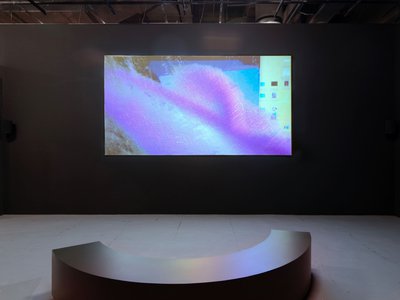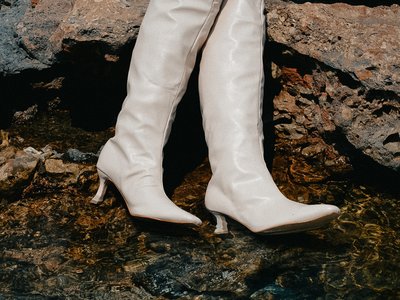Charlotte Cotton:
Your installation of images printed on vinyl ‘float’ through the first gallery of theExperimental Photography exhibition. I have been calling the placement of your work in the first gallery of the exhibition the ‘decompression chamber’ – where visitors are asked to abandon their preconceptions of what contemporary art photography can be. Adhered directly onto the wall, they are a constellation of objects that are simultaneously very specific in their detailing, and troublingly generic. Can you start by telling me about the engagement and experience that you are inviting exhibition viewers to have?
Asha Schechter:
One effect of installing vinyl directly on the wall is that it allows the architecture and exhibition furniture to become very directly part of the work. This produces a viewing experience in which the standard delineation of the art and the space is blurred. The works are installed in relation not just to each other, but the particularities of that space. In regard to the preconceived idea of a photograph, part of the goal of this work is to liberate the images from the traditional rectangles and frames of photographs, to put pressure on what we accept as an image in that category. Vinyl is usually a disposable commercial material, so the work taking that form can add to that second-guessing about the value of the images on view. I am also thinking about how the technicalities of things like frame rate and quality of display were having such a big impact on the way we understood the translation of the world into images. With the constant shift in sites of reception (flatscreen to phone to billboard to gas station TV) the average viewer becomes much more aware of discrepancies in quality and feeling. I wanted to make work that invoked these experiences. For example the method of image production I used is not really designed to be output at this scale, so the work shows the failures of reproducing certain materials. And when viewed through the iPhone camera the floaty, trompe l’oeil qualities of the works are heightened, I want all these layers of mediation in play.


